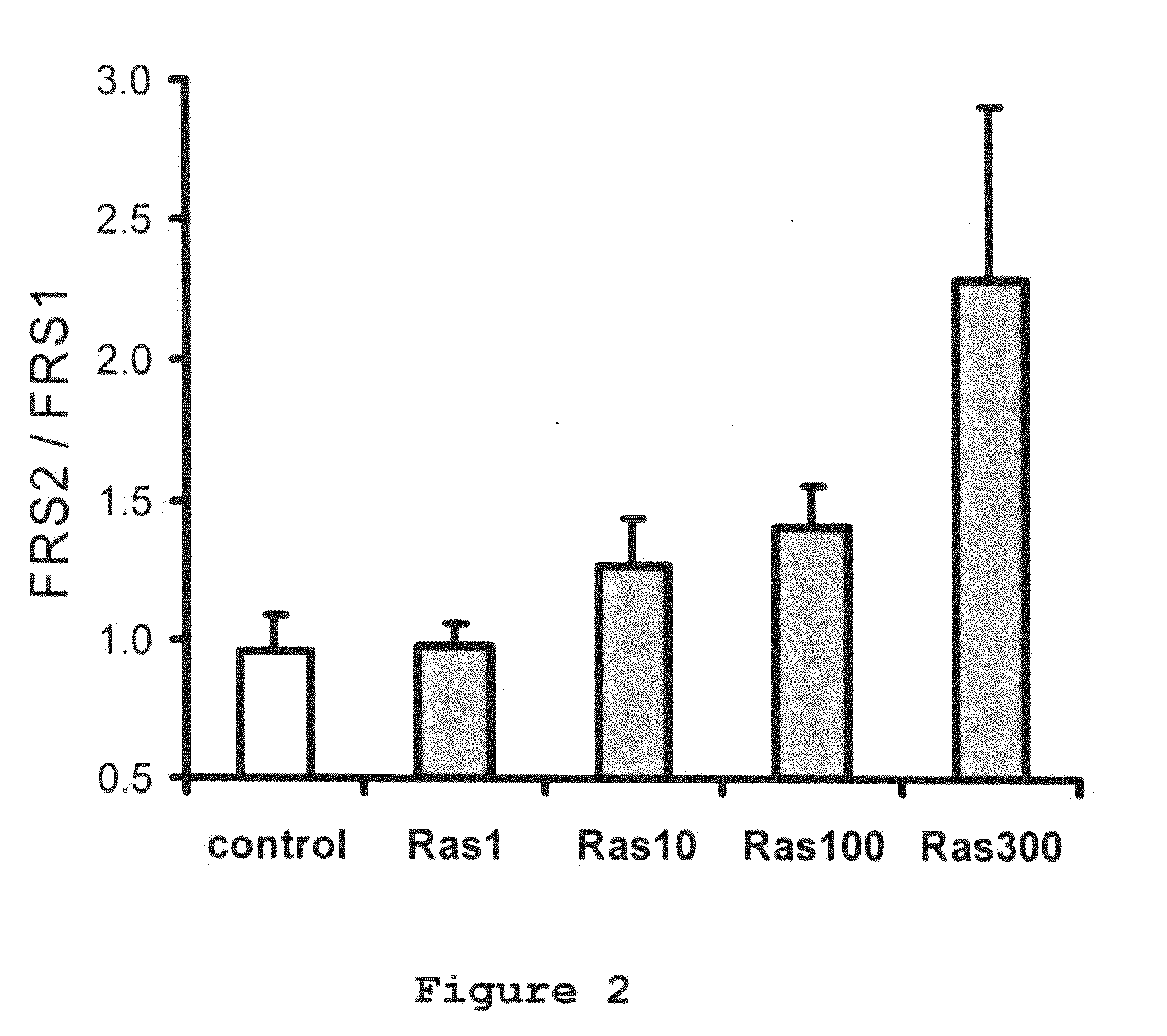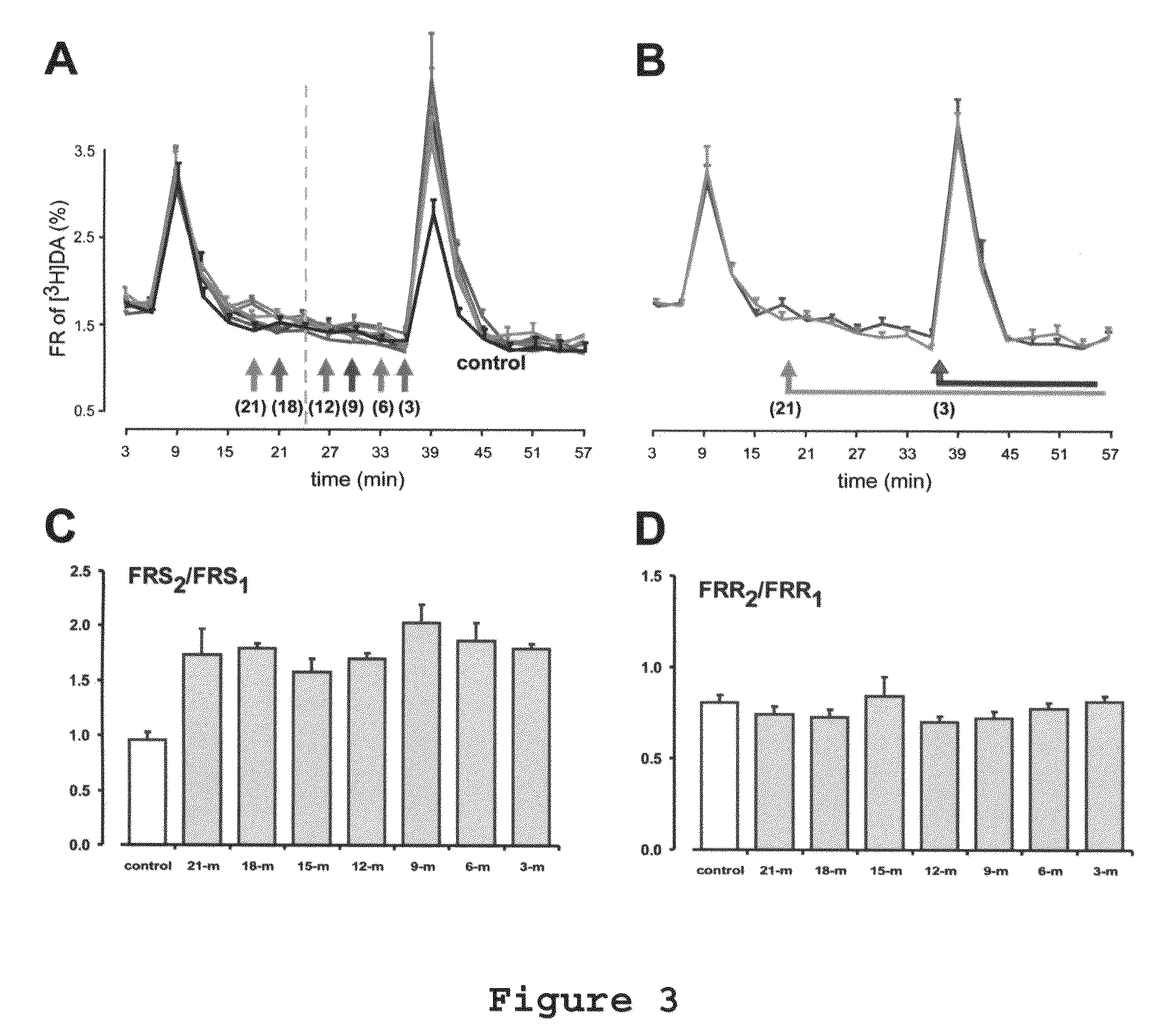Use of R (+) -N-propargyl-1-aminoindan to treat or prevent hearing loss
a technology which is applied in the field of use of r (+) npropargyl-1, can solve the problems of temporary or permanent loss of hearing, balance, or both, and serious handicap of hearing loss, and achieve the effect of alleviating reducing the symptom of hearing loss
- Summary
- Abstract
- Description
- Claims
- Application Information
AI Technical Summary
Benefits of technology
Problems solved by technology
Method used
Image
Examples
example 1
Animals and Tissue Preparation
[0047]The bulla tympani of a male guinea pig (weighing 150-350 g) was opened. The bony capsule of the cochlea was removed under stereomicroscopic guidance and the stria vascularis was stripped and the cochlea was fractured at the basis of the modiolus. The preparation contained the ganglion spirale, the afferent auditory fibers, the axons and axon terminals of the efferent bundles and both the inner and outer hair cells. All experiments were carried out in a perilimph-like solution, which contained 150 nM NaCl, 3.5 mM KCl, 1 mM CaCl2, 1 mM MgCl2, 2.75 mM HEPES and 2.25 mM Tris-OH at the temperature of 37° C. and pH 7.4. The osmolality was set by D-glucose and continuously saturated by 100% O2
Microvolume Superfusion
[0048]The cochleae were incubated with 0.2 μM [3H]dopamine (Amersham, UK, spec. act.: 31.0 Ci / mmol, 6 μCi in 1 ml) for 35 min. Each cochlea was then placed in a microvolume plexi chamber and superfused at 3 ml / min with perilymph-like solution...
example 2
In Vivo Auditory Brainstem Response (ABR) Measurements in Mice
Summary
[0054]Mice were treated with intratympanic neomycin (200 mg / ml) on the right ear on two consecutive days. Left ears were left for vehicle control (NaCl injection). In order to develop significant hearing loss, the measurement of brainstem evoked potentials were made 3 weeks after the pretreatment with neomycin (under general anaesthesia). Click stimulations to the ear including various frequencies were used to evoke the auditory response in the brainstem that was measured by multiple electrodes placed on the head of the animal.
Discussion:
[0055]Control experiments showed the hearing threshold of each ear (FIG. 4). Pretreatment with the known ototoxic neomycin produced evident hearing loss in the treated side (FIG. 4). Hearing impairment was not due to the intervention itself because the vehicle-treated side showed no hearing deficit (FIG. 4).
[0056]Next, the potential protective role of Rasagiline on neomycin-induced...
example 3
In Vivo Auditory Brainstem Response (ABR) Measurements in Guinea Pigs
Animals
[0059]Guinea pigs weighing 250-300 g were used in all experiments. All interventions(including ABR measurements and intratympanic treatments) are performed under general anesthesia using i.p. injection of a cocktail of Ketamine and Xylazine.
ABR Measurement
[0060]A loudspeaker is placed in each ear and the ABR responses were detected by four surface electrodes. These electrodes are placed two in the mastoid region and one in vertex as positive and fourth electrode was placed on forehead as the ground electrode. Calibrated acoustic signals are obtained to evoke brainstem response. The visual detection threshold is determined by decrement sound pressure in 5 dB steps. The evoked responses are then filtered and averaged with 500 sweeps using a signal processor. All ABR tests are performed bilaterally and baseline Peak Equivalent Sound Pressure Levels (PESPLs) are obtained in terms of decibel (dB). All animals und...
PUM
| Property | Measurement | Unit |
|---|---|---|
| Mass | aaaaa | aaaaa |
| Mass | aaaaa | aaaaa |
| Mass | aaaaa | aaaaa |
Abstract
Description
Claims
Application Information
 Login to View More
Login to View More - R&D
- Intellectual Property
- Life Sciences
- Materials
- Tech Scout
- Unparalleled Data Quality
- Higher Quality Content
- 60% Fewer Hallucinations
Browse by: Latest US Patents, China's latest patents, Technical Efficacy Thesaurus, Application Domain, Technology Topic, Popular Technical Reports.
© 2025 PatSnap. All rights reserved.Legal|Privacy policy|Modern Slavery Act Transparency Statement|Sitemap|About US| Contact US: help@patsnap.com



